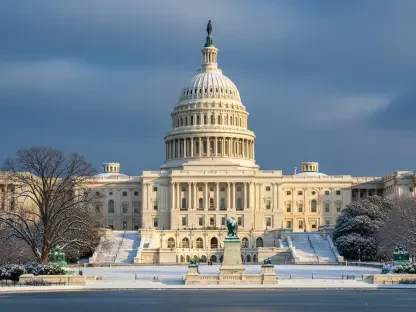Imagine a city once defined by towering steel mills and smoky skies, now humming with the quiet precision of autonomous robots and intelligent systems navigating the real world, positioning Pittsburgh, long celebrated as the Steel City, at the cusp of a technological revolution. Pittsburgh stands poised to become a global epicenter for physical artificial intelligence (AI) and robotics. Unlike software-based AI that powers virtual assistants or algorithms, physical AI focuses on tangible systems—autonomous vehicles, industrial robots, and defense mechanisms—that interact directly with the environment. This emerging field promises not just innovation but a complete redefinition of industries, and Pittsburgh’s unique combination of historical industrial strength and cutting-edge academic resources makes it a frontrunner in this transformative race.
The momentum behind this shift is palpable, driven by visionary leaders and strategic initiatives that aim to position the city and the broader state of Pennsylvania as pioneers. Joanna Doven, executive director of Pittsburgh’s AI Strike Team, has articulated a compelling case for why this region could set the global standard in a sector projected to grow nearly tenfold by 2030. Often described as a “hockey stick moment” for its anticipated rapid ascent, physical AI represents an unprecedented opportunity. With its deep-rooted manufacturing base and proximity to real-world testing grounds, Pittsburgh offers something many tech hubs cannot: a seamless integration of theory and practice. Yet, challenges loom large, from retaining local talent to securing late-stage capital. As this city reinvents itself, the stakes couldn’t be higher.
Why Pittsburgh Stands Out
Industrial and Academic Strengths
Pittsburgh’s transformation from a steel powerhouse to a potential AI leader is deeply rooted in its industrial heritage, which provides a robust foundation for physical AI development. The city’s proximity to manufacturing facilities, steel mills, and defense contractors creates an ideal environment for designing and testing systems that must operate in real-world settings. Unlike software AI, which can be coded from anywhere, physical AI demands access to tangible infrastructure—think assembly lines for robotic arms or open spaces for autonomous vehicle trials. This geographic advantage sets Pittsburgh apart from digital-first hubs like Silicon Valley, where such resources are often distant or scarce. Additionally, the city’s historical role as a center of heavy industry means that local expertise in engineering and manufacturing remains a vital asset, ready to be repurposed for cutting-edge applications.
Complementing this industrial backbone is the academic prowess of Carnegie Mellon University (CMU), widely regarded as a global leader in AI research. CMU not only produces top-tier talent but also fosters innovation through spin-off companies that fuel the local tech ecosystem. The university’s robotics programs are particularly renowned, bridging theoretical advancements with practical implementation. Beyond academics, Pittsburgh offers a high quality of life and a cost of living that is significantly lower than in traditional tech centers. This affordability makes the city attractive to startups and skilled professionals alike, creating fertile ground for growth. The synergy between industrial capabilities and academic excellence positions Pittsburgh as a unique contender in the physical AI arena.
Strategic Events and Collaborations
A pivotal moment in Pittsburgh’s journey toward AI leadership is the upcoming AI Horizons Pittsburgh summit, a gathering designed to catalyze growth and collaboration. This event will bring together a diverse array of stakeholders, including industry executives, government officials like Governor Josh Shapiro, and academic leaders such as CMU’s robotics dean, Martial Hebert. The summit’s primary goal is to align strategies for advancing physical AI development within Pennsylvania, focusing on actionable outcomes. Discussions will likely center on securing state and federal support, from Small Business Administration loans to public investments that can bolster local initiatives. Such a platform offers a rare opportunity to forge partnerships that could propel Pittsburgh to the forefront of this emerging industry.
Beyond the immediate impact of the summit, the event underscores a broader commitment to collaborative progress. By uniting government, industry, and academia, Pittsburgh is laying the groundwork for a cohesive ecosystem that can address the multifaceted challenges of physical AI. This isn’t just about showcasing potential; it’s about creating tangible pathways for growth, from funding mechanisms to policy frameworks that incentivize innovation. The participation of high-profile figures signals a bipartisan recognition of the stakes involved, emphasizing that success in this field could redefine the region’s economic future. As these collaborative efforts take shape, they highlight Pittsburgh’s proactive approach to seizing a leadership role before other regions can stake their claim in the physical AI landscape.
Addressing Challenges and Opportunities
Capital Retention and Economic Impact
One of the most pressing hurdles for Pittsburgh in its quest to dominate physical AI is the challenge of retaining late-stage capital and preventing the migration of promising startups. Many innovative companies born in Pennsylvania find themselves drawn to the West Coast, particularly Silicon Valley, where access to extensive funding networks often overshadows local opportunities. Joanna Doven has pointed out the influence of what she calls the “tech bro network,” a cultural and financial pull that frequently captures the economic value of innovations originating in Pittsburgh. This trend poses a significant risk, as the region could lose out on long-term benefits despite being a cradle for groundbreaking ideas. Addressing this issue requires not just financial incentives but also a cultural shift to build confidence in local investment ecosystems.
To counter this outflow, strategic measures must be prioritized to keep talent and capital within state borders. Building robust local venture networks and fostering partnerships with regional investors could create a self-sustaining cycle of growth. Additionally, government-backed initiatives that offer tax breaks or grants for companies committing to long-term operations in Pennsylvania might tip the scales. The urgency of this challenge cannot be overstated, as the economic impact of physical AI is expected to be transformative. If Pittsburgh can establish mechanisms to retain its homegrown enterprises, the city stands to reap substantial rewards, from job creation to positioning itself as a global benchmark in this field. The stakes are high, but the potential payoff is even greater.
Energy as a Backbone for Growth
Physical AI is not just about technological innovation; it demands a reliable and substantial energy supply to power data centers and operational systems. Recent developments in Pennsylvania underscore the critical intersection of energy infrastructure and AI growth, with a staggering $90 billion investment announced to enhance the state’s energy capacity specifically for AI applications. This move reflects an understanding that the computational demands of intelligent systems require innovative power solutions. A notable example is the renaming of Three Mile Island’s Unit 1 to Crane Clean Energy Center, a partnership that aims to support tech-driven needs with sustainable energy. Such initiatives are vital for ensuring that physical AI can scale without being constrained by resource limitations.
Further emphasizing this connection, Senator Dave McCormick’s energy and innovation summit at CMU has highlighted the synergy between AI advancement and energy policy. The event brought attention to how sustainable power solutions are not just a backdrop but a cornerstone of technological progress. For Pittsburgh, this focus on energy infrastructure offers a dual benefit: it supports the immediate needs of AI companies while positioning the region as a leader in integrating technology with environmental responsibility. As physical AI systems become more complex and widespread, the demand for energy will only intensify, making these investments a forward-thinking strategy. Pittsburgh’s ability to align its tech ambitions with robust energy planning could serve as a model for other regions aiming to enter this competitive space.
A Unified Vision for the Future
The potential for Pittsburgh to lead in physical AI hinges on a collaborative vision that spans multiple sectors and levels of engagement. From grassroots efforts like the AI Strike Team, which brings together tech developers and government officials, to high-profile events like the AI Horizons summit, the city is weaving a tapestry of initiatives aimed at fostering growth. This multifaceted approach recognizes that no single entity can drive such a transformation alone. Instead, it requires a symphony of efforts—local innovators pushing boundaries, policymakers crafting supportive frameworks, and academic institutions supplying fresh ideas and talent. This collective dynamic is what sets Pittsburgh apart as it seeks to establish dominance in a field still up for grabs.
Looking back, the journey to this point was marked by pivotal moments of reinvention, such as the transformation of a former Nabisco bakery into Bakery Square, now a thriving hub for AI companies. These milestones, paired with strategic leadership from figures like Joanna Doven, who helped brand the area as a tech center, reflect a persistent drive to adapt and innovate. The partnerships forged during energy summits and the commitments to infrastructure investment demonstrate a readiness to tackle the practical needs of physical AI. As these efforts coalesce, they paint a picture of a city that not only embraces its industrial past but also leverages it to shape a future defined by intelligent systems. Moving forward, the focus must remain on sustaining this momentum through targeted policies, continued collaboration, and a relentless push to retain the value of local innovation.









